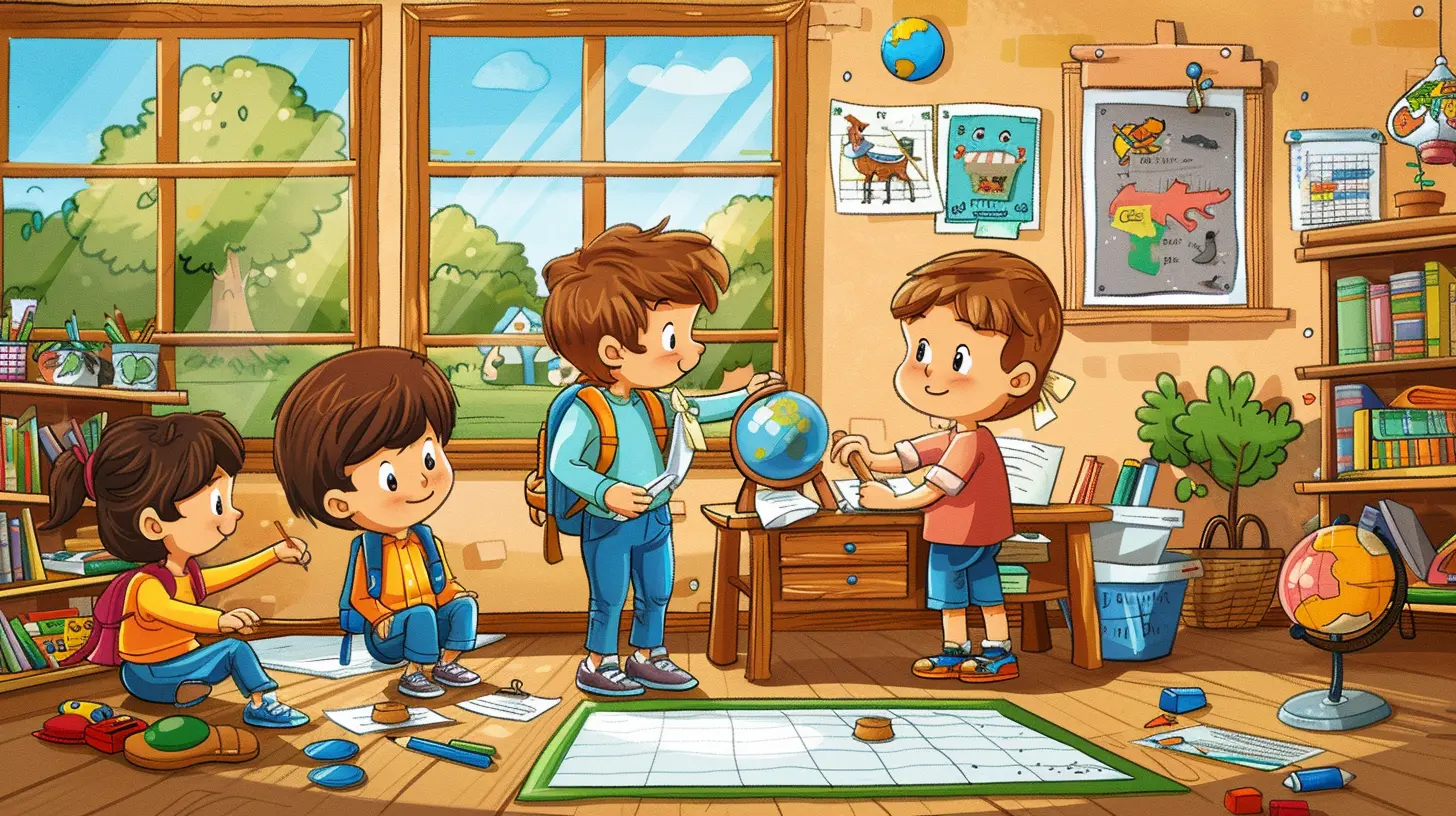27 November 2024
Let’s face it—learning can sometimes feel like a chore, especially for students who crave excitement and engagement. But what if I told you there was a way to make learning as thrilling as a treasure hunt? Well, there is! Enter scavenger hunts, a fun and interactive method that can reinforce learning objectives in a way that traditional teaching methods often fail to do.
In this article, we’ll dive deep into scavenger hunt ideas that can not only engage students but also solidify key concepts. Whether you're an educator, a parent, or just someone interested in creative learning techniques, you'll walk away with a treasure trove of ideas to implement. So, let’s explore how you can turn learning into an adventure!

Why Scavenger Hunts Work for Learning
Before we jump into the ideas, let’s first understand why scavenger hunts are so effective for reinforcing learning objectives.1. Active Learning: Scavenger hunts require students to actively engage with the material. This form of hands-on learning promotes better retention and comprehension.
2. Collaboration: They encourage teamwork, communication, and problem-solving. This is particularly useful for collaborative learning environments.
3. Multisensory Learning: Students use multiple senses—sight, touch, and sometimes even hearing or smell—to complete the hunt. This multisensory approach can cater to various learning styles, making the material more accessible.
4. Increased Motivation: The thrill of the hunt provides an intrinsic motivation. Students are more likely to participate enthusiastically when they know there's a challenge or reward involved.
5. Critical Thinking: Scavenger hunts often require students to think critically, solve puzzles, and make connections between different concepts—all key skills in any learning environment.
Now that we know why they work, let’s dive into some specific scavenger hunt ideas that can be tailored to different subjects and learning objectives.

Scavenger Hunt Ideas by Subject
1. Science Scavenger Hunt
Who said science has to be confined to the classroom or lab? Take the learning outside with a nature-based scavenger hunt. This is perfect for topics like ecosystems, biology, or even chemistry.How It Works:
- Objective: Identify different types of plants, animals, or geological features.- Tools: Use smartphones with a scavenger hunt app or a simple checklist.
- Task: For example, students can be tasked with finding a specific leaf type, identifying a bird species, or locating a rock with certain characteristics (e.g., sedimentary vs igneous).
Bonus Tip:
Add an element of scientific inquiry by asking students to hypothesize why certain plants grow in specific areas or how animals interact with their environment. This can reinforce the importance of ecosystems and biodiversity.2. Math Scavenger Hunt
Math is everywhere—you just need to know where to look! A math scavenger hunt can demonstrate how mathematical concepts are part of our daily lives.How It Works:
- Objective: Apply mathematical operations to real-world objects.- Tools: Calculators, rulers, or even your smartphone.
- Task: Ask students to find objects that relate to specific math problems. For example, "Find five objects that are symmetrical," or "Measure the perimeter of an object and calculate the area."
Bonus Tip:
Incorporate geometry by challenging students to find different shapes in their surroundings. "Find a rectangular object and calculate its area" or "Spot a cylinder and estimate its volume."3. Language Arts Scavenger Hunt
For the bookworms, a language arts scavenger hunt can be a fantastic way to reinforce key concepts like vocabulary, literary devices, or grammar rules.How It Works:
- Objective: Identify specific literary elements or parts of speech within a text.- Tools: Books, texts, or even a short story handout.
- Task: Ask students to locate metaphors, similes, or hyperboles in a passage. You could also ask them to find five nouns, three adjectives, and two adverbs in a paragraph.
Bonus Tip:
Incorporate a creative writing element by asking students to write a short story or poem using the literary devices they found. This reinforces both analytical and creative skills.4. History Scavenger Hunt
History comes alive when students can actively engage with it. A history scavenger hunt can help reinforce dates, events, and key concepts by turning them into a fun and interactive challenge.How It Works:
- Objective: Identify historical facts, figures, or artifacts.- Tools: You can design a hunt around a museum visit, historical site, or even a virtual scavenger hunt using online resources.
- Task: Ask students to find artifacts related to a specific time period, or to solve riddles that lead them to important historical dates or figures. For example, "Find a photo of a famous leader from the Civil Rights Movement."
Bonus Tip:
For a twist, incorporate primary sources (letters, old newspapers, or photos) and ask students to analyze them. This can reinforce critical thinking skills and provide a deeper understanding of historical context.5. Geography Scavenger Hunt
Geography is more than just maps and capitals—it’s about understanding the world we live in. A geography scavenger hunt can make this subject more interactive.How It Works:
- Objective: Locate landmarks, geographical features, or understand map reading.- Tools: Maps, globes, or even Google Earth!
- Task: Ask students to locate a country on a map, identify its capital, and name one geographical feature (e.g., river, mountain, etc.). You could also have them use the compass directions to describe how to get from one point to another.
Bonus Tip:
Bring in cultural elements by asking students to research a country’s customs, traditional foods, or languages. This helps reinforce not just geography but also cultural awareness.
Virtual Scavenger Hunts: The Power of Technology
In today's digital world, virtual scavenger hunts have opened up new possibilities for reinforcing learning objectives. Whether you're teaching remotely or want to incorporate technology into the classroom, a virtual scavenger hunt can be just as engaging as an in-person one.How It Works:
- Objective: Engage students with digital resources or online learning platforms.- Tools: Google Classroom, Kahoot, or even Zoom breakout rooms.
- Task: In a virtual setting, you could ask students to find specific websites or online articles that answer a particular question. For example, "Find a reliable source that discusses the causes of climate change."
Bonus Tip:
Use augmented reality (AR) tools to create a more immersive experience. AR apps like Seek by iNaturalist allow students to scan the environment around them and learn about the flora and fauna in real-time.
Scavenger Hunt Tips for Success
Alright, so you’ve got the ideas. But how do you ensure your scavenger hunt is a smashing success? Here are some tips:1. Be Clear with Instructions
Make sure the goals and objectives of the scavenger hunt are clearly outlined. Confusion can derail the fun, so be explicit about what students need to find or accomplish.2. Incorporate Rewards
A scavenger hunt is already fun, but adding a little incentive never hurts. Whether it’s extra credit or a small prize, rewards can increase motivation.3. Time Management
Set a reasonable time limit to keep students on task. Too much time can lead to distractions, while too little time can cause frustration.4. Use Teams
Teamwork makes the dream work! Divide students into groups to encourage collaboration and communication.5. Debrief and Reflect
After the hunt, take time to discuss the findings. What did students learn? What was challenging? This reflection phase is crucial for reinforcing the learning objectives.Conclusion: Learning Through Fun
Scavenger hunts are a dynamic and interactive way to reinforce learning objectives. Whether you’re teaching science, math, history, or geography, there’s a scavenger hunt idea that can make the material come alive. Plus, with the added bonus of teamwork, critical thinking, and creativity, you’re teaching students skills that go beyond the textbook.So why not give it a try? You might just discover that learning can be an adventure in itself.













Daphne Newton
Who knew learning could be a treasure hunt? Let the adventure begin and minds blossom!
February 11, 2025 at 5:18 AM